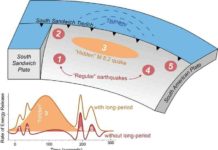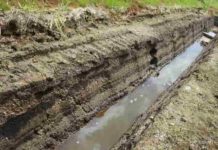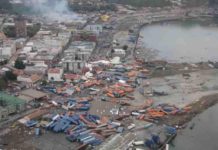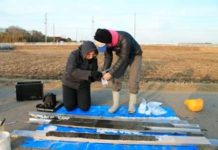
New images of ancient, underwater beach terraces around Santa Catalina Island suggest that the island is sinking, probably as a result of changes in the active fault systems around the island. At the rate that can be calculated so far, the island could disappear within three million years, as it is sinking approximately one foot every thousand years.
Chris Castillo of Stanford University and colleagues used a sort of underwater “ultrasound” called seismic reflection profiling to map out the traces of submerged marine terraces around the island, which correspond to beaches cut around the island at different sea levels. Although sea level around the island hasn’t dropped below 130 meters over the last 1 million years, the lowest level terraces are found at more than 350 meters, suggesting the island itself has sunk about 220 meters since these deepest terraces were formed.
There are several faults around the island, dominantly strike-slip to the northeast and a transtensional fault to the island’s southwest side. Within the last one million years, the researchers say, changes have happened within this fault system so that one portion of the system has “shut off” while another has become more active and allowed the island to subside. Knowing more about the exact timing and placement of this change could help scientists understand more about the potential seismic risks across fault systems in southern California. The researchers also found evidence of old landslides along a fault on the island that points toward Los Angeles, according to Castillo, which could indicate that the island may pose a small tsunami risk for the city if such landslides occur again.
Castillo will present his research at the annual meeting of the Seismological Society of America (SSA) in Pasadena, Calif.
Note : The above story is based on materials provided by Seismological Society of America.










